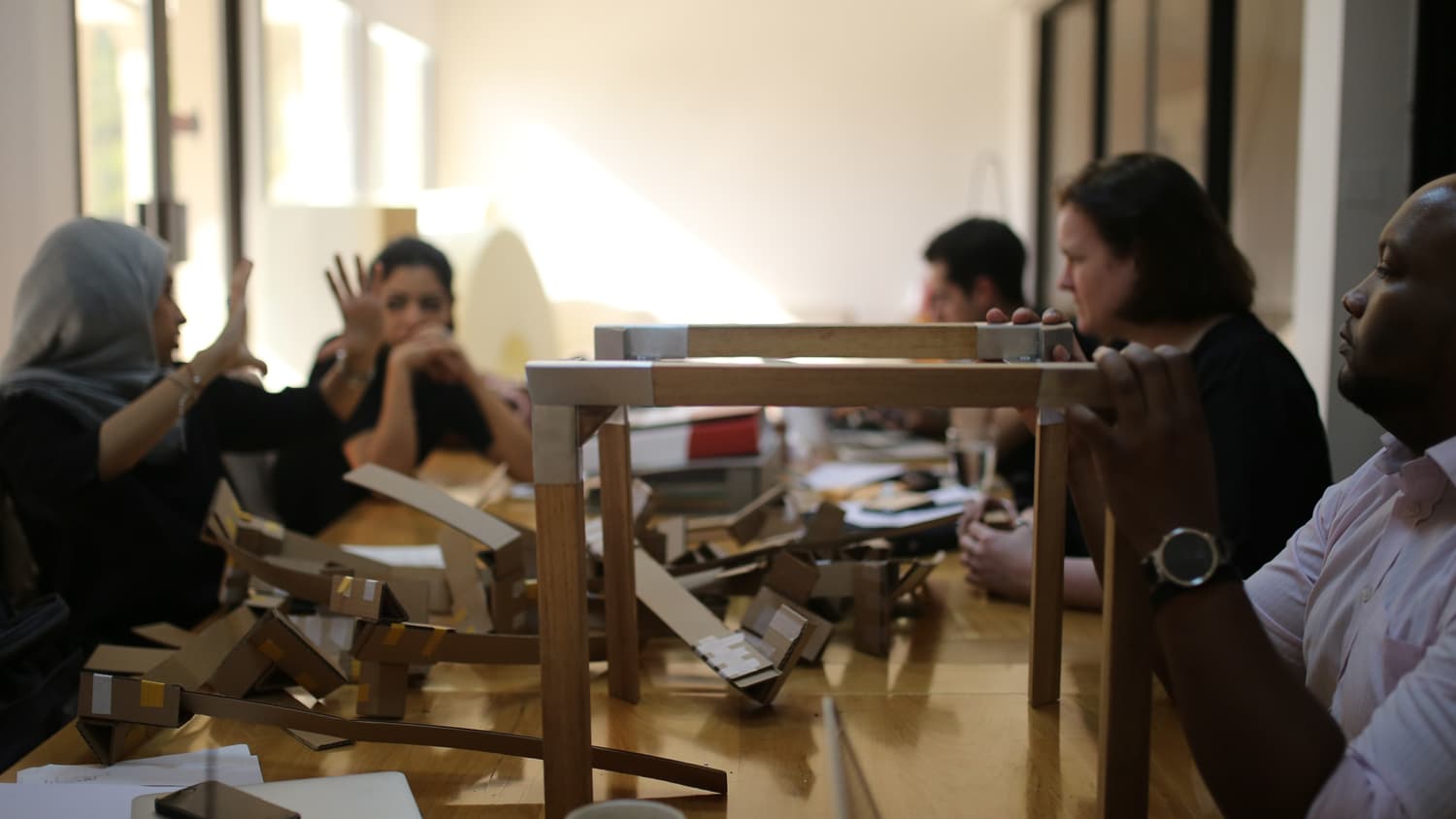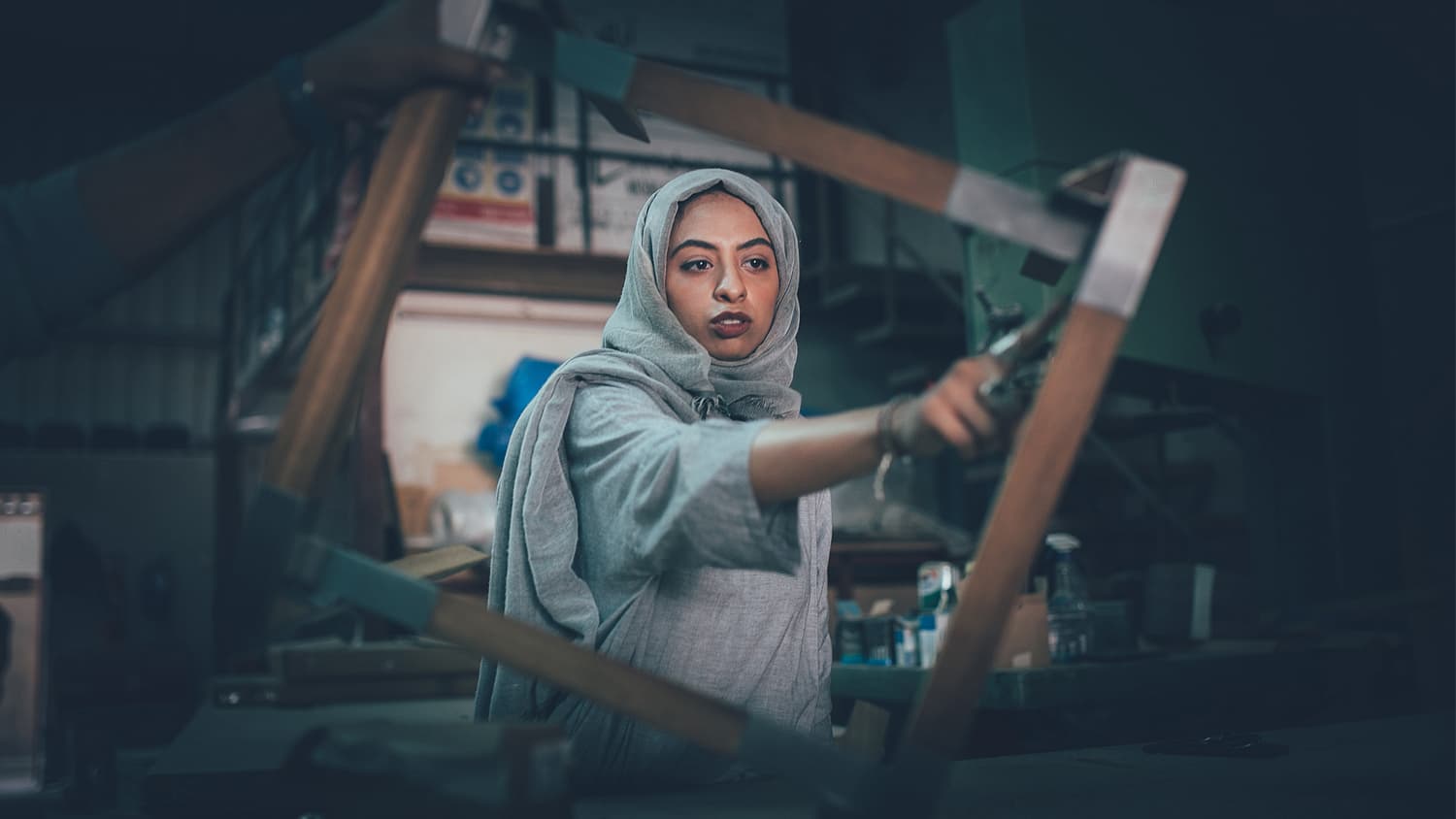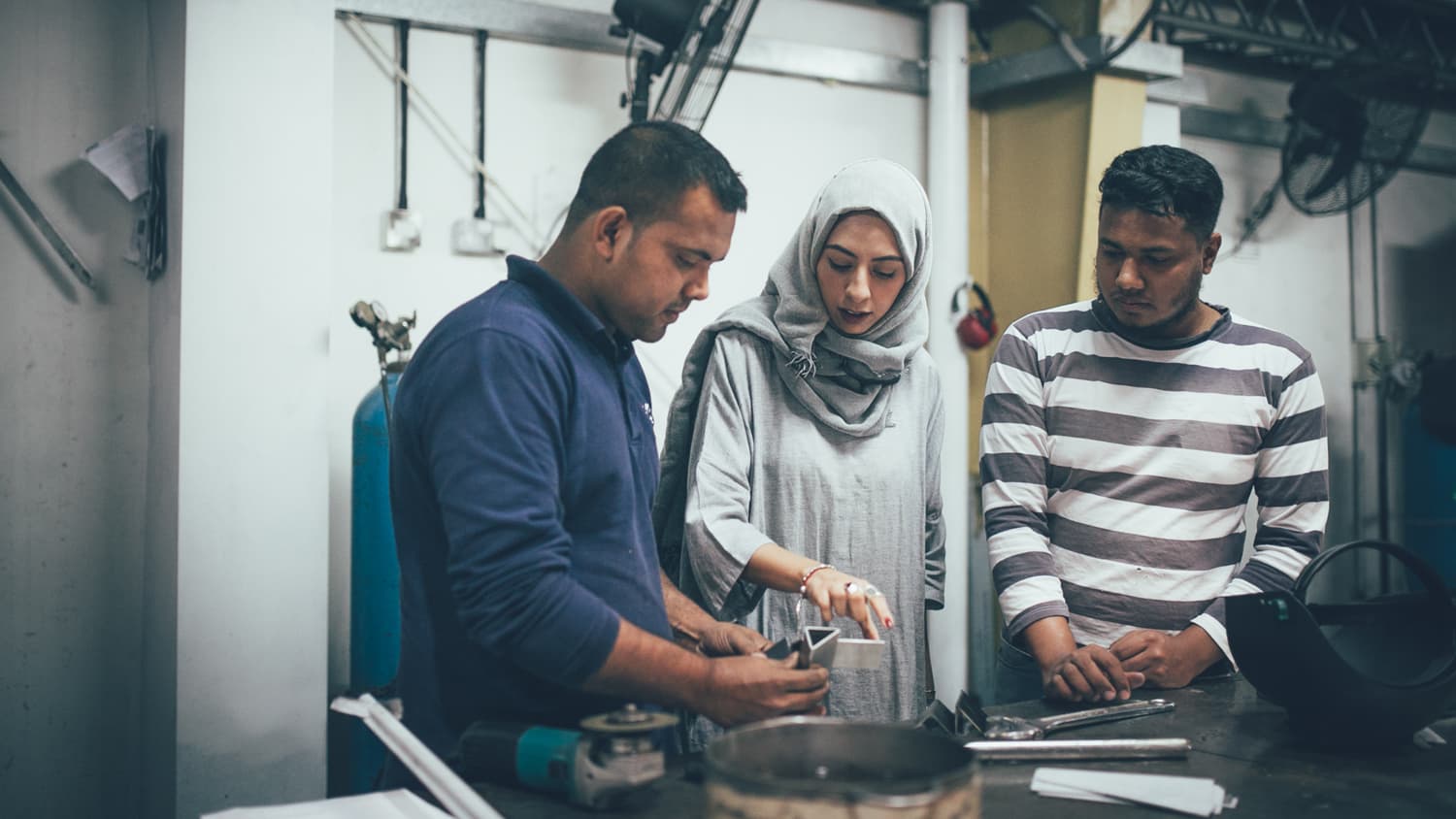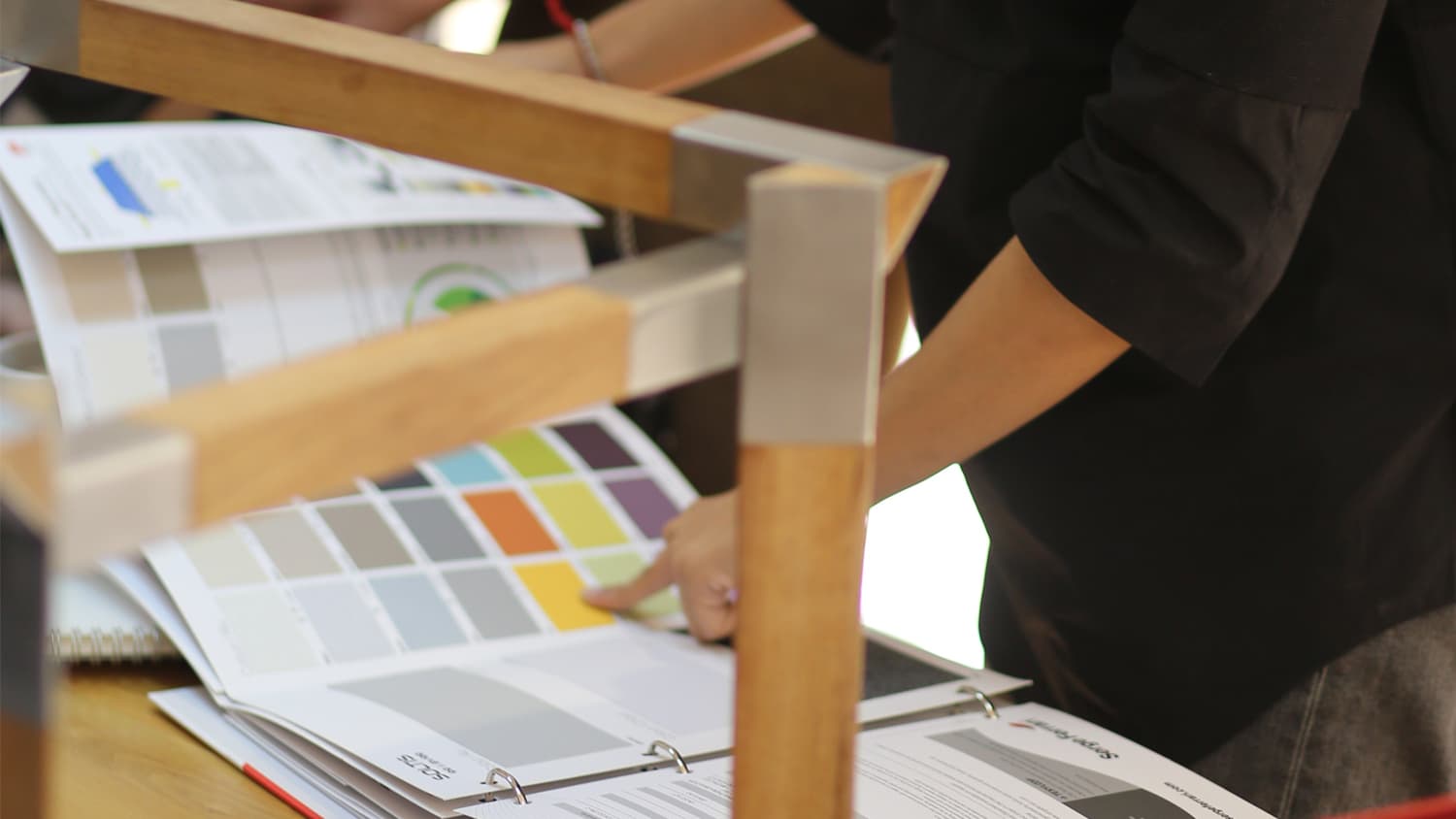Meet the Designer, Lujaine Rezk
13 March 2017
What was it about Tashkeel’s design programme, Tanween, that interested you?
I was interested in the Tanween programme for its unique support of local designers and local manufacturers. I am most interested in fabricating pieces that respond to and are driven by their cultural surroundings. I believe this connection to locality grants cultural relevance and this is critically important to the prosperity of local design. Tashkeel shares my commitment to promoting culturally-sensitive design and that is why Tanween was particularly appealing to me.
What materials and concepts have you explored and discovered whilst on the programme?
Through Tanween I have furthered my research into informal gatherings in public settings. I’m interested in how spontaneous social interaction is facilitated. This was a concept I first became interested in after working on a research project about Sha’bi housing. Studying and visiting these settlements, I continually encountered abandoned furniture. These impromptu arrangements were transported from living rooms, recycled into new settings and became fixtures on street corners, driveways and outside of front doors. They instigated very special, informal gatherings that brought together the people of a neighbourhood for coffee, tea and conversation.
I wanted to know if it was possible to instigate these gatherings and collective social sentiments once more, and I set out to restore this lost custom through the design and production of a furniture set. Just like its predecessors, the pieces are comfortable, outdoor-friendly and informal. The project acts as a public intervention that allows people to reclaim these social phenomena of “in-between spaces“. It aims to cultivate the spontaneous community and conversation of the past.

Who are you collaborating with on your project and what is nature of the collaboration?
I collaborated with local manufacturers for the wood structure, the metal joints and the woven leather seating. In particular, I worked with metal manufacturers who helped me make different iterations of the joint. The final joint is the result of mutual experimentation with strength and durability. After establishing this element of the collection, I worked with wood manufacturers to produce the teak structure. Teak was the best wood type to use because it is the most suitable for outdoor conditions. Finally, I worked with woven leather due to its strength and resilience in outdoor settings.


How have the labs and mentoring sessions influenced your process?
The labs and mentoring sessions have helped guide my project and process professionally. They have trained me and developed my thinking towards sustainable systems of long-term production, where I can begin to design things that are valuable to the user but which are also marketable and profitable. Each lab session had a different focus, which helped me to formulate a cohesive understanding of the skills required to succeed as an emerging designer and producer.

What have your challenges been so far?
I struggled to settle on the best way to realise a product that also fulfilled my concept. I had a very clear idea of the role the product would play, but it was difficult to figure out the most suitable approach for the concept to manifest in a physical form – my process didn’t simply involve producing a piece of furniture. While production was of course key, the process had to extend beyond that to invoke a state of “spontaneous conversation“ – the real heart of my concept. Therefore, I decided to focus on technique and materiality. Understanding the inherent qualities of both elements helped me to create something specifically tailored for the setting; a collection that is comfortable and appropriate for its physical and cultural context.
What do you hope to take away from this experience?
I have a long-term commitment to creating interventions for the community that are locally designed, fabricated and produced. My aim is to develop my practice around a thoughtful understanding of societal needs, encouraging local manufacturers to participate in the production of stimulating solutions. I believe there is a natural synergy here that is compatible and harmonious as well as essential.

